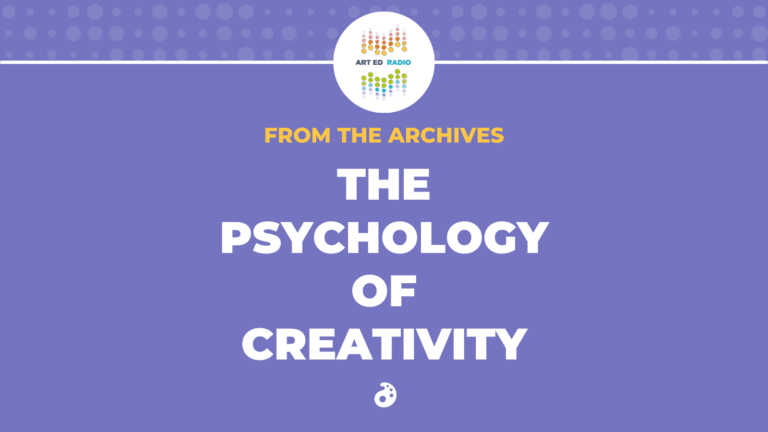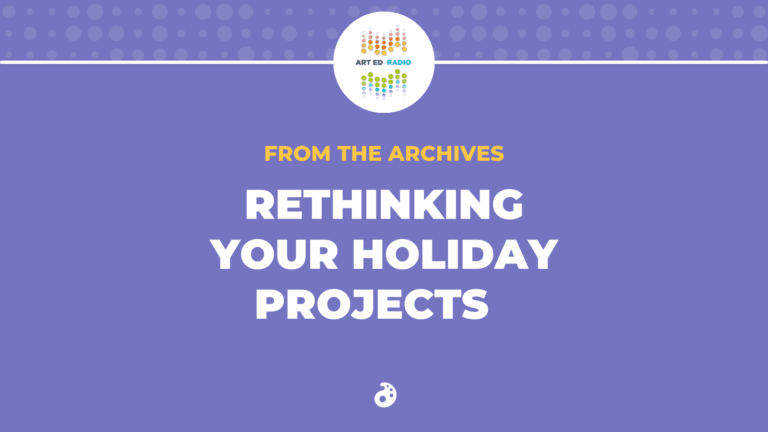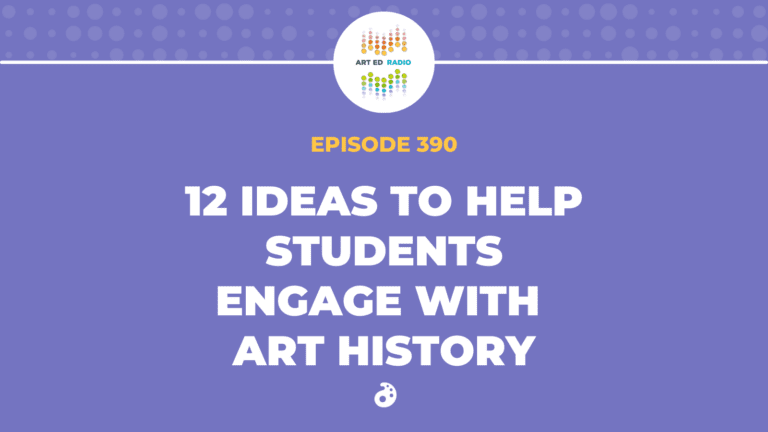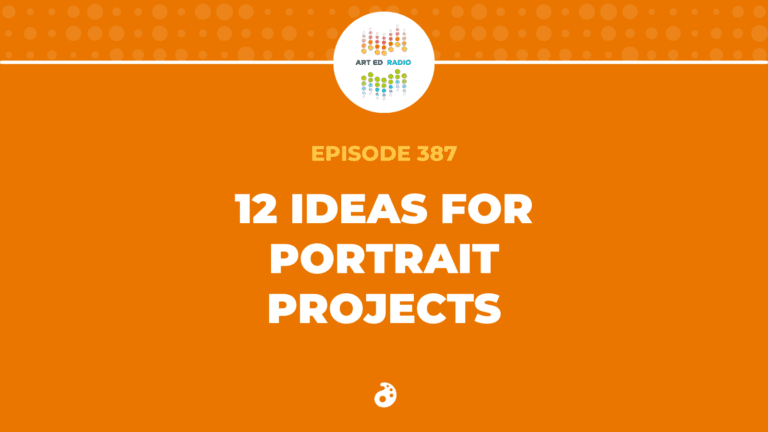Nic has been working with Special Olympics Minnesota recently to design a poster series that will be in elementary schools across the state. Today, she talks to Nick Cedergren and Katie Howlett about Special Olympics Minnesota, the importance of inclusion, and the goal of making activities accessible to all students. Full Episode Transcript Below.
Resources and Links
- View Tess’s Instagram
- See Special Olympics Minnesota on Instagram and Twitter, as well as Facebook
- You can follow Nick on Twitter as well
- Click here to order the posters Nic discussed
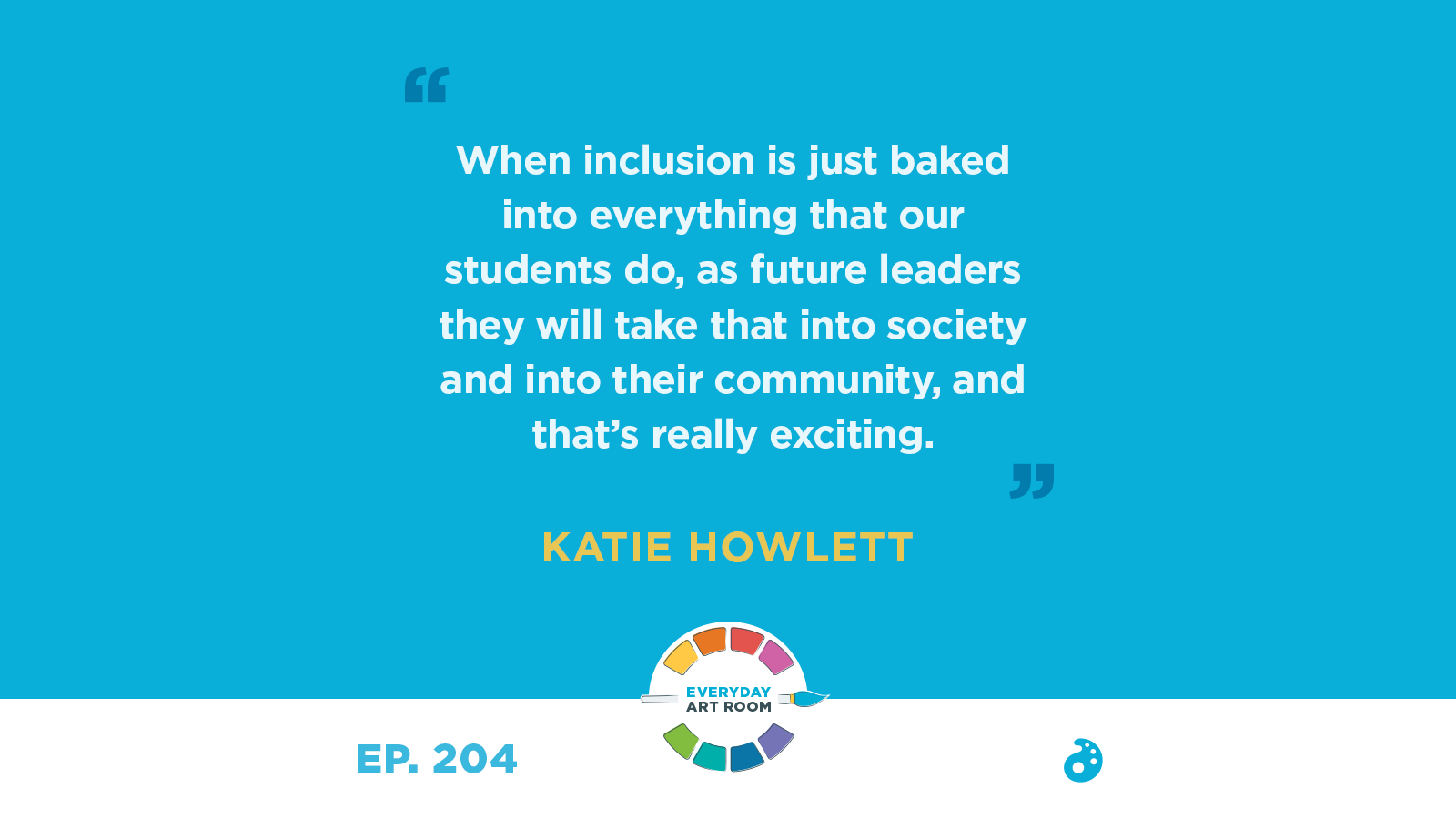
Transcript
Nic: I am really excited about this episode. We are going to be talking to Nick Cedergren and Katie Howlett from Special Olympics Minnesota. I’ve been working with them for the last year, maybe even a little bit more now, creating a poster series that’s going to go into elementary schools throughout Minnesota. There’s also a secondary version as well. We’re going to learn about the poster series, but more importantly, we’re going to learn about how we can unify our students in our classrooms. This is Nic Hahn and this is Everyday Art Room.
I’m really excited about this conversation today because we have been working together for a year now and I’m excited to share my friends with the rest of my community of art educators. So, let’s get started with just introductions. We’ll have Nick… Will you introduce yourself first?
Nick: Yeah. Hi everyone. I’m Nick Cedergren. I work for Special Olympics Minnesota.
Nic: All right. And then, Kate?
Katie: And, I’m Katie Howlett and I also work for Special Olympics Minnesota, in the marketing department.
Nic: All right. Thanks Katie. Now, both of you are working with Special Olympics. You’re on the same team. Do you work often together? Is that correct?
Katie: Yes. Different teams but we collaborate a lot.
Nic: Okay. That’s good to know. How did you come to join this organization of Special Olympics Minnesota?
Nick: Yeah, for sure. So, I started out as a volunteer. In college, I thought it would be a great resume booster and then I went to my first Special Olympics event and was just amazed by the movement and by the power of what we do. And, diving into the organization a little bit more, I learned about Unified, which I’m sure we’ll talk about in a little bit. Learned about Unified and bringing athletes with and without disabilities together to play on the same… On the same field. And, from there, I said this is what I want to do. And so, I started interning for the office and then got hired on as a staff member right after that.
Nic: Great. Katie, did you have a similar path?
Katie: Kind of, yeah. So, I… After I graduated from college with a degree in public relations and marketing, I’ve always been in the nonprofit sector. It’s been really important to me to use my skills to give back in whatever way I can. And, about four years ago, I saw the opportunity to join Special Olympics team here in Minnesota, and my sister-in-law has been a Special Olympics athlete for about 24 years and sports have always been important to me and really kind of transformed me my whole life, throughout college. So, fighting for inclusion through the avenue of sports was like a really natural fit for me. And, like, as everyone will learn throughout this conversation, it’s so much more than sports. So, yeah. It’s just been a dream come true. I think it’s such a great mission.
Nic: Thank you. That was really beautiful. I thank you for that introduction of your path towards Special Olympics. And, we keep saying Minnesota after it. So, there is a national, I believe? Am I correct? And then, we’re like a little… a segment. How are you related? How are you different? What…? What’s the relationship between the national and Minnesota?
Nick: Yeah. So, in 1968, Special Olympics was started by Eunice Kennedy Shriver. She was part of the Kennedy family. And, today we’re an international organization. We have Special Olympics International, which oversees programming from their lens, and then we also regionalize. We have Special Olympics North America, who we report to, and then each state program, kind of like a franchise, has their own program within their state. And so, Special Olympics is everywhere and I know this podcast is a wide audience and there’s… There’s a Special Olympics program staff within and office within your area for sure.
Nic: Oh, that’s amazing. Oh, okay. I didn’t realize you’re international now, too. That’s very exciting. And, we do have listeners worldwide, so that’s exciting to know that there’s a connection throughout the world as well. That’s great.
I mentioned that we have been working together for a year on a poster series. Could you give us kind of the… The idea behind the poster series and why…? Why are we doing this as an organization? What was your goals?
Nick: Yeah. I think some context might be beneficial for the audience and just for everyone listening.
Nic: Perfect.
Nick: Special Olympics, like I mentioned before, was founded in 1968.
Nic: Yeah.
Nick: And so, we recently, three years ago, hit our 50th year anniversary and the first 50 years of what we call is our Special Olympics movement have been all about giving access to individuals with disabilities, because often, society never granted that to them. But now we’re… Now, we’re shifting. The next 50 years is all about inclusion. We are being an inclusive organization. A lot of people know Special Olympics as that one time track and field event for kids with Down Syndrome, and we do have that, but that’s a very small piece of what we do at the end of the day. And so, us shifting to a more inclusive organization, inclusive perspective, is really going to help not only the disability community but the society as a whole.
Nic: Yes.
Nick: And so, a few years ago, Special Olympics Minnesota adopted a program called Unified Champion Schools, which is all about promoting inclusion within schools through various means. Here in Minnesota, we’ve grown significantly over the past couple years. Nationally, we’ve grown to almost 10,000 schools here in the U.S. And so, we’re really excited to see that schools want this, educators want this, but more importantly, students want this.
Nic: Yeah.
Nick: And, we believe we’re raising a unified generation to change society and those systemic changes of how to meaningfully include students, how to meaningfully include students with disabilities that much more. And so, with that context in mind, we’re always looking at finding ways to promote inclusion within schools.
Nic: Sure.
Nick: And, here in Minnesota, we go to schools a lot to help support, to help connect with them, to help pitch this idea of what… And, a vision of what Unified could look like. And so, as we started in elementary schools, we kind of came back as a staff and said, “What are some ways we can work with elementary schools?”. And, we noticed elementary schools have a lot of posters.
Nic: Yeah, we do.
Nick: Within their schools.
Nic: Yeah.
Nick: Passive pro… Passive programming is pretty big.
Nic: Yeah.
Nick: Which is great. And, there’s a lot of movement from classroom to classroom within elementary schools. And so, we said, “Hey. What…? Can we bring this unified mindset and develop a poster series that students can see throughout their school when they’re walking to the lunch room, when they’re walking to P.E., when they’re walking in between specialist classrooms?”. So, that’s kind of where the idea came from.
Nic: Oh, man. I love it. Thank you for the very rich background as well. Now that you’ve identified exactly what you’re going to do… You’re going to do some… What’d you call it? Passive programming. I love that. How did you go about making this happen? What was the process?
Nick: Yeah. Within the disability community, we have this motto and nothing about us without us.
Nic: Oh.
Nick: And so, having…
Nic: Mm-hmm (affirmative)-
Nick: Having that at the forefront of everything that we do is really important. Person-centered planning is really important in the disability community. Making sure that we at Special Olympics not only provide a microphone, but amplify that microphone for students and adults with disabilities is at our core. And so, at the… At this level, we have a great group of students. We call them our student board of directors.
Nic: Awesome.
Nick: That advise us on our programming. And, we do not do anything without their approval, without their thoughts, without their insights. And so, once this idea came about and we decided internally as a staff to move down this route, we brought this idea to them and said, “Hey. What would you like to see in your school? What would catch your eye? What would be meaningful for you?”. And so, we went through a fun process to identify those themes of the posters. We broke it into focus groups and then just brainstormed, really pinned down what that was all about. And then, we felt like we were ready to find a local artist to help us in this work. And, I’ll toss it over to Katie to explain that process after we got the framework all figured out.
Nic: Wow.
Katie: Yeah. So, we really wanted this to be a true partnership with local artists and collaborate and pay them fairly for their work. And so, like Nick said, we listened to the student board and their direction and to help determine the themes, and once we had that, we picked two local artists. So, Nic, we partnered with you for the elementary series and then we partnered with a high school student who designed and illustrated a series for secondary schools. So, yeah. We wanted it to be like a really close collaboration and lean on the artists and their creative direction. So, I would love to hear from you like what the partnership was like on your end.
Nic: I’m glad that you asked because I’ve been dying to talk about this. I’m really excited that I was invited to be part of this, this series. It has always been a dream of mine to work more towards sharing my art with other people, and to have this opportunity, it was spectacular. And, I loved the organization of Special Olympics Minnesota, and… And, that is just… Is… It was such a good pairing because it not only was me sharing my art, but it was also me sharing my heart, right? And, that was very exciting for me. But actually, one of the things that I was more excited about is who you brought in as that high school artist. Can you talk about Tess a little bit and how you found her as well?
Nick: Yeah. We actually found Tess on Instagram and just sharing a few of her pieces of work that kind of made the rounds. And so, we said, “Whoa. We have this idea. A high school student, ideal fit, amazing work.” And so, we reached out to her with a blind ask. Didn’t really have a relationship with her. And, she was so sweet. She reached out and said, “Yeah, I do this on the side to support my future higher education initiative.” So, even better that, you know, the work that she’s doing is to support her, her growth long term as well. So, that was a really fun partnership to work with her.
Nic: Yeah. And, Tess… We’ll put her information as well. I’ve commissioned her on a personal level as well to work. She did a portrait of my daughter and it is… It is spectacular, and to know that this, at the time, 16-year-old person created the work of art that is hanging in great honor in my classroom… Or, in my house… It’s just really special to see her then also excel. I know that she gets commissions, but this must have been a great resume builder for her as well. So, I’m… I applaud you for not only seeking local artists but also seeking student artists. That is an amazing opportunity.
Nick: Yeah.
Nic: Thank you so much.
Katie: We’ll share the artwork with you as well of what Tess did. She did a series of portraits on key leaders in the disability community and they’re outstanding. She’s so talented.
Nic: She’s so talented. Oh. That’s great. Yeah. I’m very excited. I’m very excited to see it. And, let’s just talk about this. Like, when is the rollout? What’s that rollout going to look like? Can you just speak to what that’s going to look like and where it’s going to go?
Nick: Yeah. So, right now, we’re in the final stages of putting together each series and working with a local vendor to get them printed. And so, the ideal rollout is once school, this school year, starts, we’re really going to promote that this is an option for schools to get. It’s a free resource that we’re providing for schools in Minnesota as part of the Unified Champion School movement and program. And so, schools can sign up and order them on our website and I… I bet we could get… I bet we could get a deal done for any listeners listening to this podcast if they’re interested in ordering some with some posters as well.
Nic: That’s awesome. That is really, really great. Yeah. So, we’ll… We’ll put those links as well of just how to obtain these posters or at least see them, both the work from Tess and myself. Let’s move away from the posters a little bit and let’s just talk about your organization in general. What are some of the events that you do beyond this…? You… You called it Unified, right? Unified… Right?
Nick: Unified Sports. Yeah.
Nic: Thank you. Unified Sports. Yeah. Let’s talk about like the overall… Other projects that you are working on.
Nick: Yeah. One of the biggest questions we get is, “When is the Special Olympics?”. Because a lot of people associate Olympics with what’s happening right now.
Nic: Sure.
Nick: And, Paralympics, all of that. And, whenever we get that question, we say, “Every day. Special Olympics is happening every day in our communities, in our schools.” And, here in Minnesota, we host about 300 events a year, pre-pandemic, is what we were averaging. I think the international stat is we host 16 events every day at Special Olympics internationally. So, there’s a lot happening throughout the world as far as Special Olympics goes. And so, we have different models of how we do that, how we implement our sporting events. We’re excited to get back to events once it’s a safe setting for all, everyone to safely participate in. But we’re extremely excited for our next year, in 2022. We’re going to be bringing a large team to the 2022 USA Games in Orlando, Florida, hosted by Disney and ESPN. And so, that’s just a great platform to really showcase our movement on a really large scale and showcase what our athletes can do and the power of bringing students with and without disabilities together at the same time.
Nic: Yeah.
Nick: And so, with… With the cool shift that’s been happening in schools, Unified can happen anywhere, whether it’s in your community, within your school. Inclusion looks different all across the board.
Nic: Yeah. We… And, we… We’re really hitting your organization, which is sports-based, but what can we as educators, as art educators…? What are some of the things we can do as even just humans? What can we take away from this conversation that we could implement in our classroom or in our lives?
Katie: So, what’s really cool about Unified Champion Schools is inclusion comes really naturally to students.
Nic: Mm-hmm (affirmative)-
Katie: And, what this program is doing is just giving those opportunities for students of different abilities to interact and form real friendships. We’re learning that exclusion exists, I think, because those students are often denied those opportunities to interact. That’s how it was when I was in school. Students who received special education services rarely interacted with other students throughout the day. Not in the classroom. Sometimes in the lunchroom.
Nic: Mm-hmm (affirmative)-
Katie: But never in extracurricular activities. So, this program is just making those opportunities available for students, and they’re hungry for it.
Nic: Yeah.
Katie: And, that’s what we’ve realized. So, I think educators can… Educators who are teaching anything can use that model, that my classroom is a classroom where anyone is welcome and people can form those friendships. I mentioned my sister-in-law earlier in the podcast and she has Down Syndrome and I, like, get emotional when I think about if she could have had this program while she was in school, her life would be completely different. She’s the most social person I know. She’s making friends everywhere she goes. But she was denied those opportunities while she was in school. So, what… Like, what could have her high school career looked like? What would her life look like if she had Unified Champion Schools?
Nic: Oh my gosh.
Katie: It would have been really different.
Nic: It would have been. Yeah. I mean, I don’t know her situation, but I know… I know our history as in our society and you’re right. The people that I went to school with could have left our school in a different way with different opportunities. And, I think you’re right. Where is the most…? The most basic place to create this opportunity? And, it is right there in our young, youngest humans, where they just… They just live. They aren’t living with preconceived ideas.
Katie: One thing that Nick always talks about, which I think is so powerful, is like our students are our future leaders and our future decision makers and the people who will go on to hire people, and when they… When inclusion is just baked in to everything that they do, they’re going to take that into society and into their community, and that’s the really exciting part.
Nic: It really is. It really is.
Nick: Yeah. I would add, too, as educators in the space of… In the space, is just presume competence. I think… I think this whole work of inclusion is around mindset, and so, if you presume competence in students with disabilities, that’s going to go a long way for how you view them, how you view your classroom, how you structure your lessons. The goal of the lesson is not the step-by-step instructions itself. The goal is the meaning behind the lesson. What are you trying to achieve? And, I think in this space, it’s really easy for us to forget or to think of them as others. But if you presume competence and you find ways for them to… For them to achieve that goal…
Nic: Yep.
Nick: That’s… That’s going to go a long way, not only in your classroom, but in the hallways, the lunchrooms, like Katie talked about, and the school as a whole. Often with, in special education, the word special is a euphemism for separate, which is really unfortunate.
Nic: Yeah.
Nick: Because that’s not… That’s not what laws dictate here, here in the U.S. That’s not our mindsets. I don’t think we can expect an inclusive society without fostering inclusion in the classroom, and that is really important aspect of the K through 12 education system, is not the lesson itself but what are those life lessons at the end of the day that they’re going to take with, like Katie was mentioning, after they leave. That’s the whole point of school. Prepare you for your next step. And so, to… Again, to bring that inclusive mindset with you is extremely important and we’re just excited to work with schools to do that in many different and unique ways.
Nic: Amazing. Thank you. Your work is powerful and it’s meaningful and I bet you wake up every day just knowing you’re making a difference, because you are.
Nick: Thank you, Nichole. You as well.
Katie: Yeah. Thank you.
Nic: I absolutely appreciated Nick and Katie’s time because I certainly learned a ton from our conversation. I just… I love the idea of having a unified classroom, this idea of creating true friendships of people with all abilities and giving students those opportunities to just be natural. And, that is one big message, one takeaway that I have. I cannot tell you how proud I am to be part of this project of the posters that are going out to the elementary schools of Minnesota. I want to just tell you the overall arching ideas of each of the posters.
One phrase that they asked me to work with was choose inclusion. Amongst that image, I created several students sitting around, playing instruments together. Everybody has a different ability in the image and you can see that they’re all united in the way that they are interacting.
Better together. This is a phrase that we’ve heard a lot in our recent history, but it is such a powerful message. We are better together, and after you hear that message from Nick and from Katie, man, you can’t deny it.
Speak kindness. Speak kindness. In this image, I show several people. They have boxes… You know, text boxes out of their mouth. However, there is no text. Just speak kindness, whatever that sounds like to you and whatever language you’re speaking. Make sure that it’s kind.
Celebrate differences. Right? We’re not just identifying differences, but we’re celebrating differences. Differences can be people’s superpowers, right?
Be kind to yourself. This is a huge one. Social and emotional learning is extended to everyone. It’s inviting everybody to love yourself, be kind to yourself.
And then, the last message. Everybody can. I love it. This image shows several students playing together, playing dress up. Everybody can. We can all do that.
I love the messages in these posters. The images are simplistic. They are fun, bright colors, but also there’s a lot of neutrals involved. They were super fun to create and the whole meaning behind what I was doing took all of my energy, all of my efforts, all of my thoughts, in my spare time, and it was worth it. Something I’m very proud of and can’t wait to share with you. Of course, we’ll have links to all of these things in the podcast notes. Keep an eye out for additional resources that we will be providing through The Art of Education University focusing on inclusion.
Magazine articles and podcasts are opinions of professional education contributors and do not necessarily represent the position of the Art of Education University (AOEU) or its academic offerings. Contributors use terms in the way they are most often talked about in the scope of their educational experiences.
